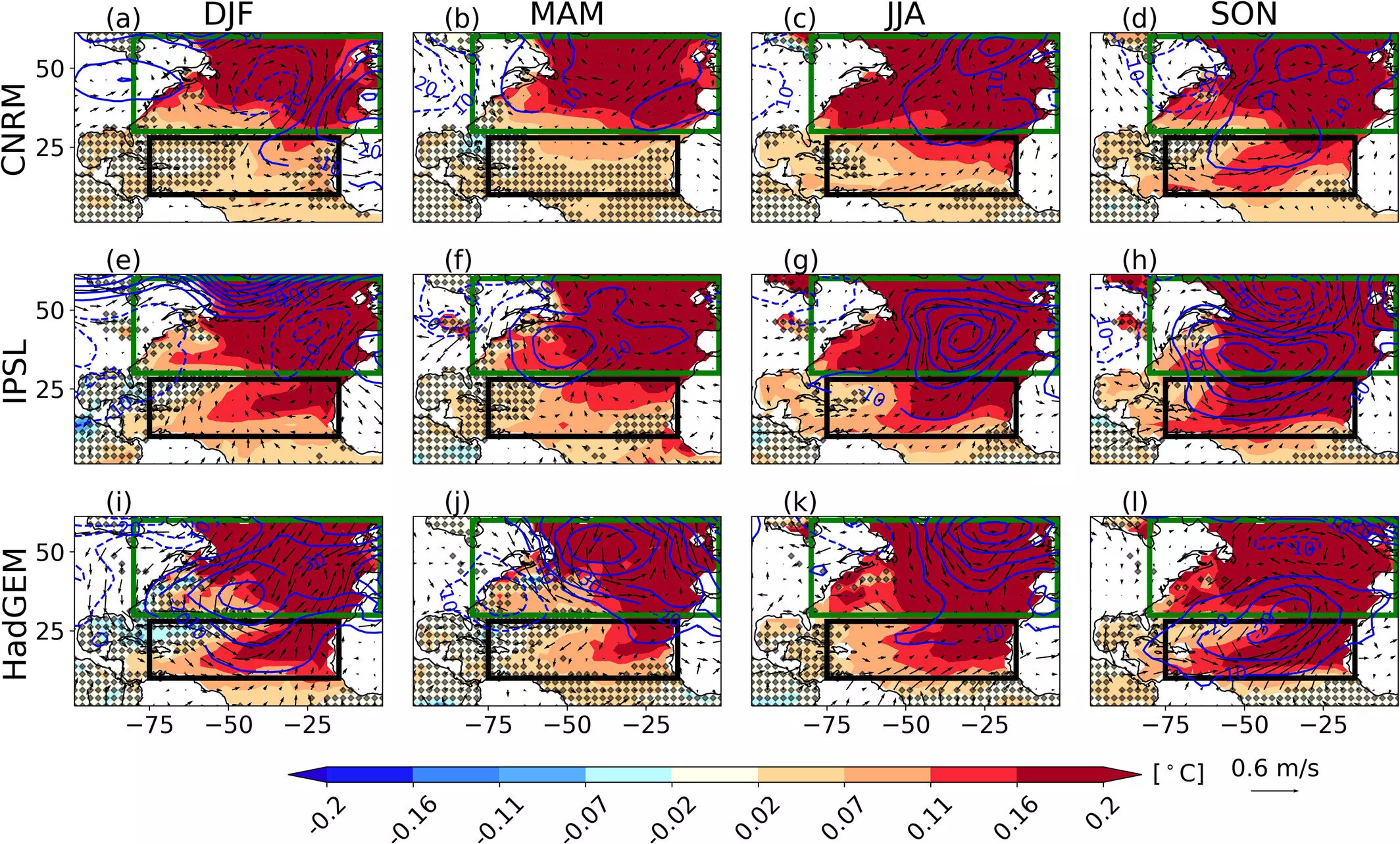Recent research has unveiled the intricate relationship between ocean dynamics in the Atlantic and global climate patterns. One of the key aspects of this relationship is the Atlantic Multidecadal Variability (AMV), a climate phenomenon that has profound implications for weather across multiple continents. The study highlights that shifts in the mixed layer—a segment of the ocean where warmer surface waters interact with cooler depths—are fundamental to establishing significant climate behaviors. This revelation challenges the previously held notion that the primary drivers of climate variability stemmed from heat exchanges between the ocean and the atmosphere.
At the forefront of this study is Dr. Balaji Senapati from the University of Reading, who emphasizes the importance of the mixed layer’s depth as a critical influencer of global climate variability. The research signifies a paradigm shift in our understanding of how oceanic conditions affect climatic trends. The findings suggest that warmer temperatures in the North Atlantic not only influence local weather patterns but also play a pivotal role in affecting conditions thousands of miles away. Since the AMV is linked to variations in temperatures over long periods, it impacts everything from hurricane trends in the Caribbean to precipitation levels in regions like the Sahel.
The dynamics of ocean warming underscore a significant feedback loop, a concept that emerges prominently in this research. When the extratropical North Atlantic warms above average, it leads to a reduction in the intensity of trade winds. This weakening results in a shallower mixed layer, where less water is warmed by solar energy, concentrating heat in a thinner layer. This process intensifies the warming of the tropical Atlantic, further affecting the trade winds and completing the cycle. Conversely, when the AMV experiences a cooler period, this cycle flips, leading to a general cooling across these regions.
The implications of these findings are substantial, particularly for climate modeling and forecasting. Traditionally, climate models may not have sufficiently accounted for the critical upper-ocean processes responsible for modulating AMV patterns. This oversight could lead to significant inaccuracies in predicting not just local weather conditions but also broader climatic shifts. The integration of nuanced oceanic variables into climate modeling practices could better equip scientists with the tools necessary to forecast climate change impacts accurately and devise effective mitigation strategies.
As the scientific community grapples with the impending challenges posed by climate change, gaining insights into natural variability such as AMV becomes increasingly essential. This research lays the groundwork for a deeper understanding of the ocean-atmosphere system and emphasizes the need for revising climate models. As we evolve our methodologies, the synthesis of ocean dynamics will play a pivotal role in shaping our response to climate variability, ultimately aiding in the development of informed strategies for sustainable management and preparedness against climate-related disasters worldwide.


Leave a Reply